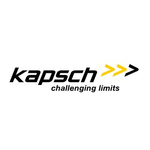CO2 Savings of up to 20 Percent: Digitally Controlled Clean Air Zones Help Reduce Transport Emissions – Kapsch TrafficCom reports
While overall emissions are decreasing, transport emissions continue to grow
VIENNA–(BUSINESS WIRE)–Since 1990, emissions in Europe have fallen more than 30%. However, this hides the fact that transport emission have yet to follow the trend – between 1990 and 2019, they have grown by almost 20%. The damaging effects of these emissions on the climate, environment and particularly health are well known – in fact, according to the WHO, the number of untimely fatalities in Europe due to air pollution is higher than that of road accidents. That is why more and more countries are introducing legislature to reduce emissions.
Clean Air Zones (CAZs) are an important instrument for achieving these emission targets. These zones define urban areas that certain vehicle classes are not allowed to drive in, or are only allowed to drive in for a fee. The development of a technical infrastructure ensures that the flow of traffic can be controlled in accordance with the new targets. In this way, traffic congestion in the relevant areas of the city can be reduced, thereby improving air quality.
“With congestion charging, Clean Air Zones or zero-emission zones, you could use a strong lever to significantly reduce traffic emissions,” says Julia Azfar, mobility expert at Kapsch TrafficCom. “Governments and cities are starting to become active, but there is a lot of room for improvement, especially in urban areas. The technology is there – we just need the political will to tackle the ‘mobility of the future’ properly.”
Clean Air Zones are already a recipe for success in other European countries: in London, for example, CO2 pollution has been reduced by 20 percent, while in Milan a similar measure has resulted in an 18 percent drop in particulate matter.
Spain is also among the pioneers: After a new emissions law was introduced in 2021, more and more cities are turning to CAZ solutions to improve their air quality. Kapsch TrafficCom is now supporting six cities in the introduction and technical implementation of this solution, enabling them to meet EU targets and ensure access to EU funding.
Kapsch TrafficCom is a globally renowned provider of transportation solutions for sustainable mobility with successful projects in more than 50 countries: www.kapsch.net/ktc
Contacts
Kapsch TrafficCom AG
Sandra Bijelic
P +43 50 811 1724
sandra.bijelic@kapsch.net



